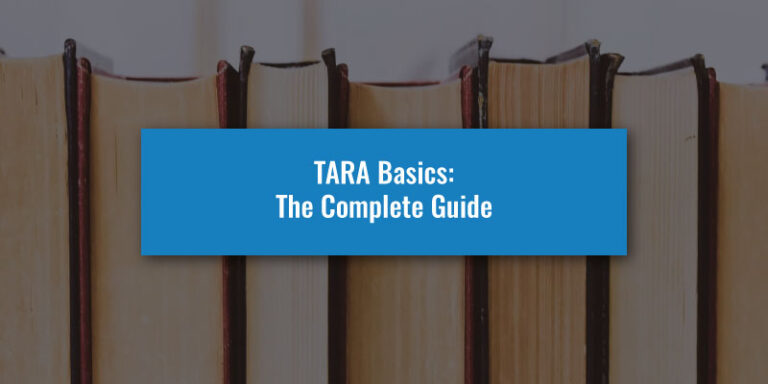If you are applying for Law at Oxford, Cambridge, or other top universities, one of the biggest hurdles you will be faced with is the LNAT.
Unlike any test you have ever done before, ensuring you have effectively prepared for the LNAT will make all the difference when it comes to scoring highly.
But how can you prepare for the LNAT? This guide runs through each of the two sections of the LNAT, explaining the skills that will be required to succeed and the ways you can develop your understanding and improve your technique. Before we dive into Section A, let’s review the basics of the LNAT.
What is the LNAT?
If you aren’t familiar with the LNAT, check out our LNAT Basics Guide before continuing, as you’re going to need to know how the LNAT is structured, how it is marked and why it is used. If you know about the LNAT already, here is a very quick recap.
The Law National Admissions Test (LNAT) is an entrance exam used by a consortium of UK universities to assess prospective undergraduate law students. The LNAT is used to supplement other selection procedures — your A-level results, personal statement, and admissions interview — not to test your knowledge of the law. Instead, the computer-based exam assesses critical thinking, problem-solving, and analytical skills.
What is the structure of the LNAT?
The LNAT has a time limit of two hours and 15 minutes and is divided into two parts: Section A, a set of multiple-choice questions, and Section B, an essay writing task. These tasks are separated and each has a set time to complete, with 95 minutes to complete Section A and 40 minutes to complete Section B.
Effective LNAT preparation is crucial to achieving an offer, so let UniAdmissions guide you through it.
The LNAT is a major part of your Law application, so make sure you’re ready for it with guidance from experts. Our LNAT Tuition Programme supports you through every aspect of the test through Unlimited One-to-One Tuition, Live Courses, Comprehensive Materials and much more.
Discover our Law Full-Blue Programme by booking a free consultation session by clicking the button below to enrol and triple your chances of success.
A
LNAT Section A Preparation
In Section A, you will have 95 minutes to answer 42 multiple-choice questions based on 12 passages of text provided. This means that you’ll need to complete three to four questions per passage. There will be four possible answers to each question, but only one will be correct.
You do not need to have any particular knowledge to complete Section A. However, you must spend time preparing for LNAT Section A to know what to expect during the test. As part of your LNAT Section A preparation, it is also a good idea to practice the skills the admissions tutors are looking for applicants to demonstrate. It would be worth brushing up on these skills so you are confident when it comes to the test.
What does LNAT Section A test?
Section A is all about your comprehension and reasoning skills. The admissions tutors want to know that you can understand, analyse and interpret information. In the test, you will need to work out what the question is asking, pinpoint which part of the text is relevant, and choose the best answer from the multiple-choice answers provided. This will need to be done using the following:
- Comprehension
- Interpretation
- Analysis
- Deduction
The LNAT is also used to identify if students can understand different parts of a passage. An integral point to understand is what constitutes a good argument. These are:
Evidence: arguments based on opinions and value judgements are weaker than those based on facts and evidence.
Logic: arguments should flow and the constituent parts should fit well into an overriding view or belief.
Balance: a good argument should concede that there are other views and beliefs (counter-arguments). Creating a strong argument involves dismantling these ideas and explaining why they are wrong.
What do you need to know for LNAT Section A?
Here are a few key ideas that you will need to revise and prepare for before sitting Section A of the LNAT:
ARGUMENTS vs ASSERTIONS vs EXPLANATIONS
ARGUMENTS vs ASSERTIONS
vs EXPLANATIONS
The following clip is from a UniAdmissions LNAT Live Course, in which our expert tutor explains how you can determine the differences between these three types of discussion within a passage:
PREMISE vs CONCLUSION
- A conclusion is a summary of the arguments being made and is usually explicitly stated or heavily implied.
- A premise is a statement from which another statement can be inferred or follows as a conclusion.
Hence, a conclusion is shown/implied/proven by a premise. Similarly, a premise shows/indicates/establishes a conclusion.
FACT vs OPINION
Sometimes you will be required to distinguish between a fact and an opinion.
- Fact is something that can be tested to be true or false.
- Opinion cannot be tested to be true or false.
CORRELATION vs CAUSATION
Just because two incidents or events have occurred does not mean that one has caused the other. For example: “French people are known for having a glass of wine with dinner and they have a larger life expectancy than we do. Therefore, we should consume wine to be healthier.”
This argument is flawed. There are 2 events: (i) French people known for having wine and (ii) French people having a larger life expectancy. There is no suggestion in the extract that (i) wine is causally related to (ii) or that having wine actually leads to a longer life. Accordingly, in itself, the premises do not adequately support the conclusion – there could be other reasons such as diet or exercise.
How should I prepare for LNAT Section A?
1. Read a wide range of texts
As Section A assesses your ability to comprehend and analyse texts, it is important to improve your reading comprehension. You can do this by studying a variety of quality texts, such as news articles, academic journals, and literature, and then summarising the main points. Be sure to identify the tone and analyse the author’s argument.
2. Practice thinking critically
As you read these texts, you should check your understanding by asking yourself questions on their meaning, such as:
- Is the statement one of fact or opinion?
- Have you focused on the detail or jumped to a conclusion?
- Have you made a logical deduction about the information?
- Is there something in the statement that has been left unsaid?
- Is the statement supported by evidence?
- What is the writer’s attitude? For example, are they being serious or making a joke?
- Is the statement relevant or irrelevant to the question?
If there are ambiguities, they are assessing how well you cope with ambiguities. However, the solution is always in the passage somewhere.
3. Practice your Time Management
Time management skills are crucial for the LNAT. With 95 minutes to answer 42 questions, that gives you roughly two and a quarter minutes to answer each question. In fact, many students find the most difficult part of the test is not answering all of the questions correctly, but doing so under its timed conditions and working at a steady pace.
Decide how long you want to spend on each passage of text and the multiple-choice questions. You have 95 minutes to complete Section A, therefore you could decide to spend 7 minutes reading each passage of text and then answer the connected questions. The remaining 11 minutes could then be used to go back over any questions you found difficult.
4. Understand the format of the test
It is essential to familiarise yourself with the format of the LNAT, including the types of questions that may appear in Section A. To do so, you should definitely take advantage of the official practice tests available, which will help develop your understanding of the test structure and the types of questions you may encounter on the day.
Extra LNAT Section A Tips
- Read the question carefully and make sure you understand what is being asked.
- Look for any keywords in the question and answer options before reading the passage of text.
- When you then go on to read the passage of text, look out for those keywords.
- Consider the questions listed above when deciding what a statement means and selecting your answer.
- Use a process of elimination to find the correct answer. By discounting the incorrect answer options, it helps to narrow down the answers until you are left with one.
- If you are unable to narrow the options down to just one, then go with your gut feeling when selecting an answer and come back to it later.
- No points will be deducted for an incorrect answer, so make sure you answer every question even if you are unsure.
One of the hallmarks of a good multiple-choice question is the inclusion of one or more answer options that are wrong but almost right. Questions like this are not tricks. They are there to test whether your powers of discrimination are fine-grained or coarse-grained. Work hard to find and eliminate them.
Boost your LNAT Score with expert support from UniAdmissions.
With our LNAT Tuition Programme, you will have complete guidance for both Sections of the LNAT, with regular tuition from an expert tutor and a whole suite of revision and practice resources to get yourself ready.
Discover our LNAT Tuition Programme by booking a free consultation session by clicking the button below to enrol and triple your chances of success.
Access "The Oxbridge Application Vault"
- 300+ page ebook for Oxbridge Applicants
- 25 page ebook for Personal Statement
- 2h+ online course to succeed in any exam
- Online Oxbridge Success Calculator
- 12 page ebook about UniAdmissions

Access "The Big Book Of Oxbridge Applications" For FREE
Applying to Law at Oxford or Cambridge? Learn everything you need to know about the LNAT and the rest of the application process in The Big Book Of Oxbridge Applications, available for free now! Through over 350 pages, you will find:
- 28 example Oxbridge Personal Statements
- Over 40 admissions test practice questions
- Interviews with Oxbridge students and graduates
- Additional downloadable resources
Fill in your details below to claim your digital copy today!

B
LNAT Section B Preparation
In this section, you will be presented with a choice of three essay questions, and you will be required to answer one of them in a well-structured, persuasive manner under a time limit of 40 minutes.
You do not need to have any particular knowledge to complete Section A. However, you must spend time preparing for LNAT Section A to know what to expect during the test. As part of your LNAT Section A preparation, it is also a good idea to practice the skills the admissions tutors are looking for applicants to demonstrate. It would be worth brushing up on these skills so you are confident when it comes to the test.
What does LNAT Section B test?
To answer Section B of the LNAT, you will need to have strong critical thinking and analytical skills, good writing skills and a strong command of written English. You need to be able to communicate your ideas clearly and coherently, structure your essay effectively, and present your arguments in a logical and persuasive manner.
Having a good knowledge of current affairs will also work in your favour. The admissions tutors really like to see interesting and creative arguments which are backed up by evidence rather than opinions. Focus on these skills in your LNAT Section B preparation.
How should I prepare for LNAT Section B?
1.Choosing your question
As mentioned, you have three options for your essay. We have a video snippet from our Law Programme in which our tutor Amy Gregg goes through the explanation of selecting the right question.
We’d recommend you take two minutes to read all the questions! While one essay might seem easy, you may find you run out of points and arguments. Using your time wisely will enable you to gauge how comfortable you are with a topic from your background knowledge.
2. Remember to Plan your essay
There are many reasons why you should plan your essay before you begin writing. These include:
- You don’t have much space so you need to make it count!
- It allows you to get your thoughts down on paper before writing
- You’ll write faster once you have a plan
- You run the risk of missing the point if you don’t plan
There’s no set period of time that should be dedicated to planning. This differs for everyone because everyone is different! You should spend as long as you want planning, provided you have enough time to legibly write your essay. As a rough guide, we’d recommend 5-10 minutes.
3. Learn how to structure your essay
It is important that your essay has a clear framework and logical progression, such as the following structure:
- Introduction: introduce the topic and give a brief outline of what you will discuss.
- Main argument: discuss the facts in favour of your position.
- Counter-argument: present arguments to the contrary.
- Conclusion: state what you believe and why.
You can then begin to structure your essay, including the way that points will be linked. At this stage, it is worth considering the balance of your argument and confirming that you have considered arguments from both sides of the debate. Once this general structure has been established, it is useful to consider any examples or real-world information that may help to support your arguments.
Finally, you can begin to assess the plan as a whole and establish what your conclusion will be based on your arguments. You can use a variety of methods to actually put your ideas down, whether this is a mind map, bullet points or PROs and CONs, use what is best for you.
4. Practise timed essay writing
Section B of the LNAT requires you to write a 500-750 word essay in 40 minutes, so it’s important to get used to writing under strict time constraints. To get started, we recommend working with the sample essay topics, focusing on building a compelling argument with a logical structure. It may be beneficial to begin writing without time constraints before gradually picking up the pace.
Never avoid writing about topics you do not know much about. This can be dangerous for your LNAT score in the exam if only topics you are uncomfortable with come up. If you need someone to look over some practice essay answers for the LNAT and provide any guidance, then ask our LNAT tutors to mark your essay.
5. Review top-scoring essays
The LNAT website not only lists sample topics, but provides top-scoring answers to certain questions, such as “Does it matter if some animal and plant species die out?”. It is strongly recommended to read through these, to gauge how you should present your argument and get an idea of what the examiners are looking for.
Writing an LNAT Essay
To give you an idea of what you should be trying to achieve with your LNAT Section B essay, we’ll do a brief worked example together. Consider the question: “Abortion should only be permitted in certain circumstances.” Discuss.
Introduction
Present a brief outline of what you will discuss. In this case, you should clearly define “Abortion” (e.g. the termination of a pregnancy). If you wish, you can highlight the key themes that will run through the essay, but keep it short!
Main Body
You should have a bunch of points written down that you can call on for this section. Here are some points considering arguing for abortion we came up with during the planning stage:
In the event of a medical issue
Disability of the child
Sexual assault
The mother wants to give up the foetus
The mother is too young
You now have a choice of several points you can use, but you can’t go into detail for all of them! You should focus on the quality not quantity of points made. Choose the points from which you can make the most original contribution.
Once you have chosen your points, you should create a structure:
Paragraph 1: Disability of the child
Paragraph 2: Sexual assault
Paragraph 3: In the event of a medical issue
You should then write PROs and CONs of each point for each paragraph. Ensure you have a balanced essay that considers all points of view fairly. Thinking about all elements of an argument is important; thinking of alternative views can strengthen your argument for or against something.
Conclusion
Here you will bring together the points from the main body. You shouldn’t bring any new points into the conclusion, focus just on what you have previously spoken about. If you have summarised each point in the main body, then a shorter conclusion will suffice, and vice versa.
Extra LNAT Section B Tips
- The ideal LNAT essay is 500-600 words long. If you write less than this your essay will be too short to be evaluated properly and you are unlikely to do well.
- You should try and remove repetition, surplus words, and digressions. This kind of discipline will be rewarded.
- Do not sit on the fence or say that each side of the argument has a point unless you go on to say which point each side has. This is different from considering both sides and will come off as indecisive.
- Your opinions do not matter, all the Admissions Tutors are interested in seeing is your ability to defend a position which may or may not be your own personal opinion.
- Do not try and impress with fancy words or elaborate style that have no substance. Be straightforward in your writing and your argument.
Practical Preparation for the LNAT
Preparing for the LNAT isn’t all about practising for the questions, however. There are some practical considerations to keep in mind, away from the content of the Admissions Test itself. You will need to ensure you are ready to attend the actual test, or else you may face complications before you even see the paper.
Make sure to check the deadlines for the universities you are applying to and remember that test places get booked up quickly. Do not leave it until the last minute. It should go without saying, but you must ensure that your chosen universities actually require the LNAT first. Doing some research into how these unis use the LNAT will also help you set your expectations for the minimum you should achieve.
If you are applying for Oxford or Cambridge, you will need to have sat the LNAT on or before 15th October. If you are not applying to Oxbridge, you have until January 14th.
Make sure to take photo identification and a printout of your confirmation email to the test centre with you. Arrive 20 minutes early, as if you are late, you may not be allowed to sit the test.
Conclusion
Ultimately, passing the LNAT test is a challenging but achievable goal, but by following these steps for your LNAT preparation, you can improve your chances of doing so and pave the way towards a rewarding future in Law.
What you have got to remember that the LNAT is your opportunity to demonstrate to the Admissions Tutors that you are capable of succeeding at an academically demanding subject. As long as you use your skills of deduction for the multiple-choice questions and argue coherently in your essay you are sure to do well.
Remember, the LNAT is not designed to trip you up. Its purpose is to allow you to demonstrate the skills that are necessary for a career in Law. Following these tips and effectively preparing for the test will improve your chances of getting a good LNAT Score.
Looking to effectively boost your LNAT score?
The LNAT is a major part of your Law application, so make sure you’re ready for it with guidance from experts. Our LNAT Tuition Programme supports you through every aspect of the test through unlimited One-to-One Tuition, Live Courses, Comprehensive Materials and much more.
Discover our Law Full-Blue Programme by booking a free consultation session by clicking the button below to enrol and triple your chances of success.







